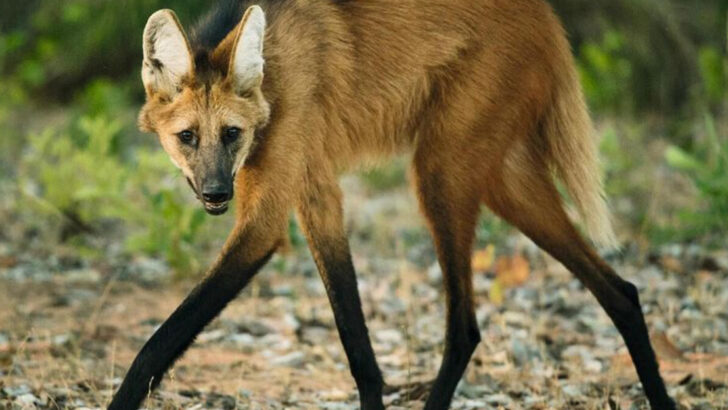Some animals look like they were dreamed up during a fever nap—and we’re here for it.
Furry oddballs with bug eyes. Jungle mischief-makers that resemble stuffed animals gone rogue. Creatures so weird, so precious, you’ll wonder how they’re even real. But they are. Every last whiskered, wide-eyed one of them.
These aren’t your average zoo friends. We’re talking leaf-eating fluffballs that glide like ghosts. Pocket-sized primates with bedtime stares. And beasts with noses, tails, or toes so bizarre, you’ll be giggling before you can Google them.
Nature got weird, and it worked.
So buckle up for a wild ride through the adorable and the absurd—because these 17 exotic mammals didn’t come to play.
Well… some of them did.
Fennec Fox
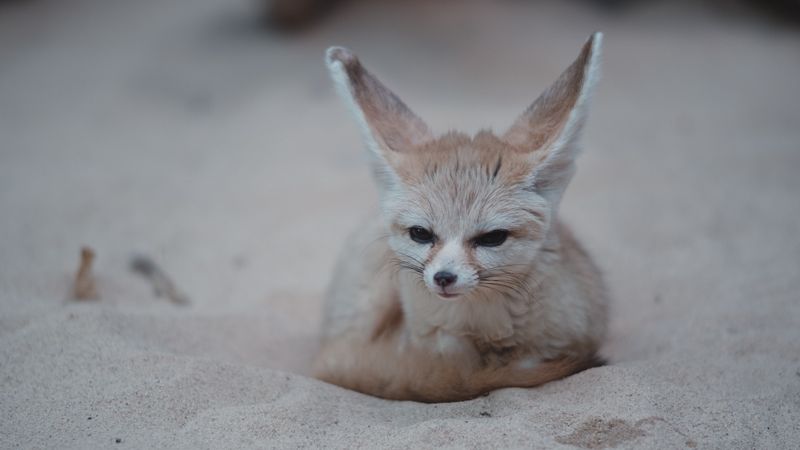
The Fennec Fox is a tiny marvel with ears almost as large as its body. Imagine the Sahara Desert, where this nocturnal creature thrives, using its oversized ears to dissipate heat and listen for prey.
This sandy-furred fox has a playful personality, often seen bouncing around the dunes. Its bright eyes seem to dance with the reflection of the desert sun.
Smelling slightly of earth and adventure, the Fennec Fox is not just cute but essential to its harsh environment. Did you know they rarely need to drink water, getting moisture from their food?
Quokka
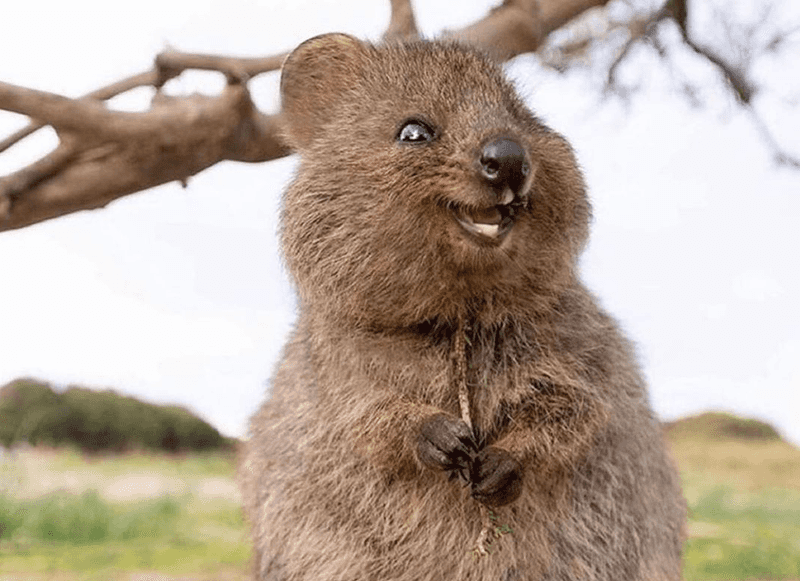
With an ever-present grin, the Quokka is known as the world’s happiest animal. Native to Rottnest Island, this marsupial’s friendly demeanor has made it an internet sensation.
Picture a tiny, furry friend with a pouch, hopping around with boundless energy. Its surroundings are lush, filled with the scent of eucalyptus and salt from the nearby ocean.
This mild-mannered critter seems to always pose for photos, enchanting visitors with its charm. Fun fact: Quokkas can climb trees in search of food, a rare skill among their kin!
Aye-aye
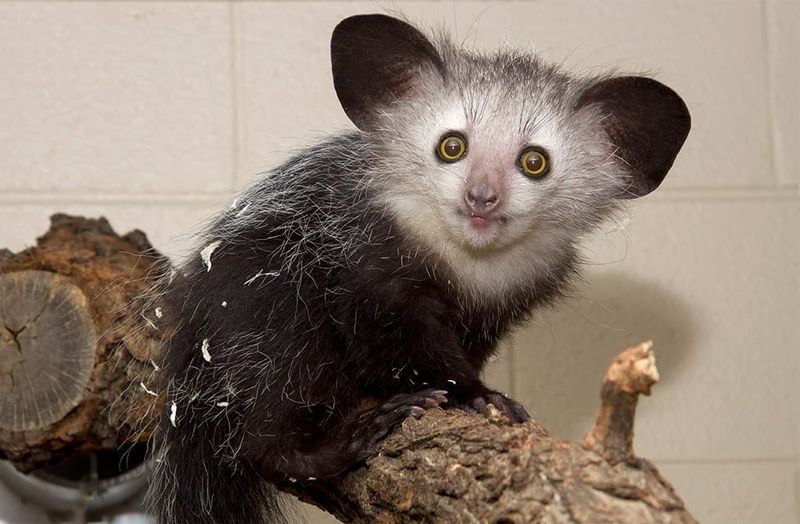
In the dense forests of Madagascar, the Aye-aye creeps through the canopy, its long middle finger tapping on wood. This nocturnal lemur is not only strange-looking but also vital for controlling insect populations.
Its large eyes shine like lanterns in the darkness as it forages. Imagine the whisper of the jungle as it moves, a ghostly figure in the night. Though often misunderstood, the Aye-aye embodies the mystique of its homeland.
Did you know? Local legends once considered it an omen, but today it’s a symbol of biodiversity.
Babirusa
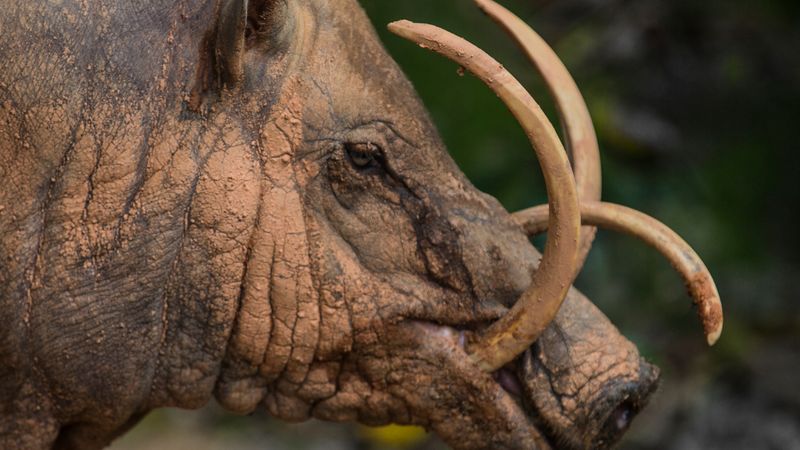
In the lush forests of Sulawesi, the Babirusa wanders with its peculiar spiral tusks. At first glance, these tusks might appear cumbersome, but they serve as a display in this pig-like creature’s social rituals.
Covered in coarse hair, the Babirusa enjoys wallowing in mud, surrounded by the thick scent of earth and greenery. It’s a creature of habit, following trails worn over centuries. Though its appearance may seem odd, the Babirusa is a testament to nature’s quirky ingenuity.
Fun fact: Their tusks can grow so long they curve back into their skulls!
Saiga Antelope
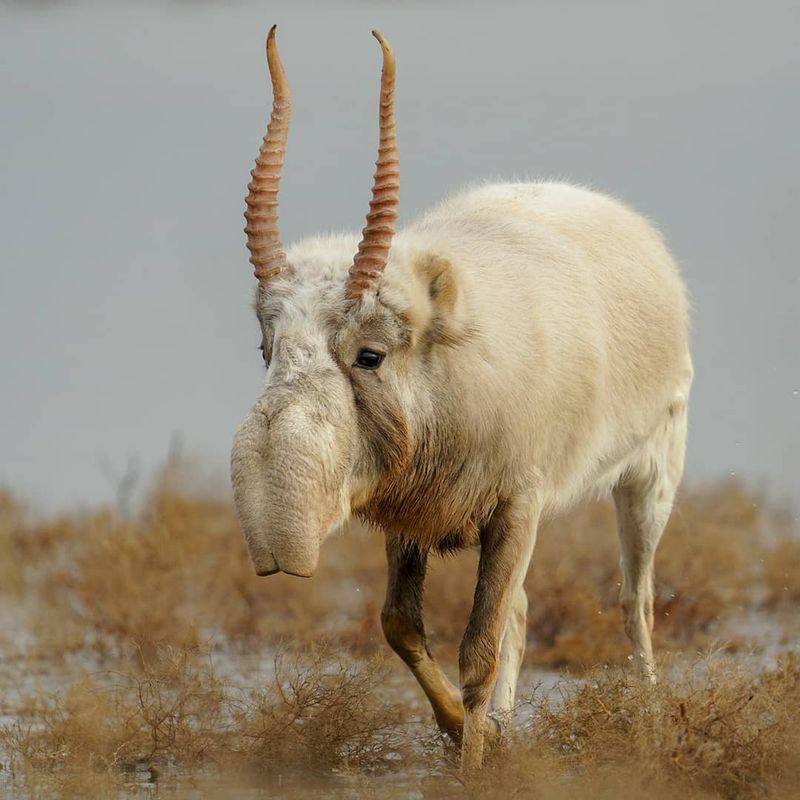
Roaming the steppes of Central Asia, the Saiga Antelope’s unusual snout makes it instantly recognizable. This enlarged nose is more than a quirky feature; it acts as a filter for dust and cools air in the arid environment.
Imagine vast open landscapes, under a clear sky, where herds graze peacefully. Their tan coats blend seamlessly with the landscape, a mirage in motion. Once near extinction, these antelopes are a conservation success story.
Did you know? Their migrations are among the longest of all terrestrial mammals.
Okapi
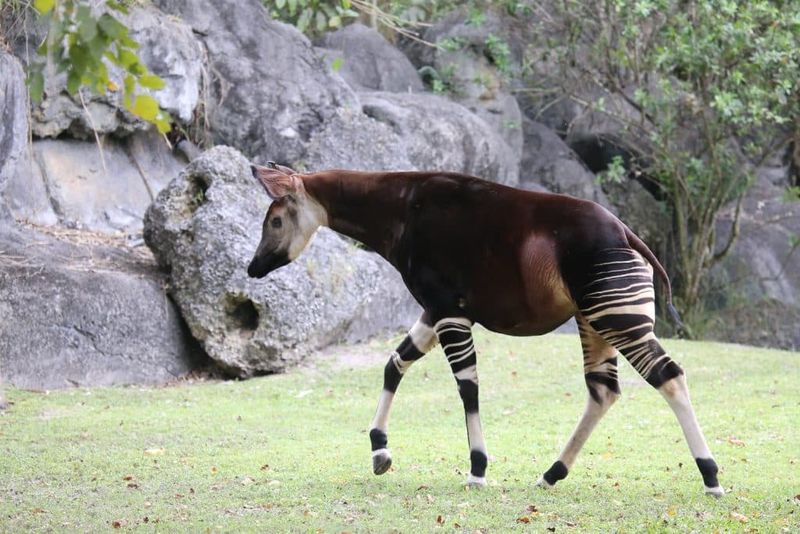
In the heart of the Ituri Rainforest, the Okapi steps gracefully through the undergrowth. With zebra-like stripes on its legs, this relative of the giraffe is a master of camouflage. Its dark, velvety coat is striking against the dappled light filtering through the trees.
Picture the soft rustle of leaves and the damp forest aroma as this elusive creature moves silently. Known as the ‘forest giraffe,’ the Okapi is truly a hidden gem of the African wilderness.
Fun fact: The Okapi was only discovered by Western scientists in the early 20th century.
Numbat
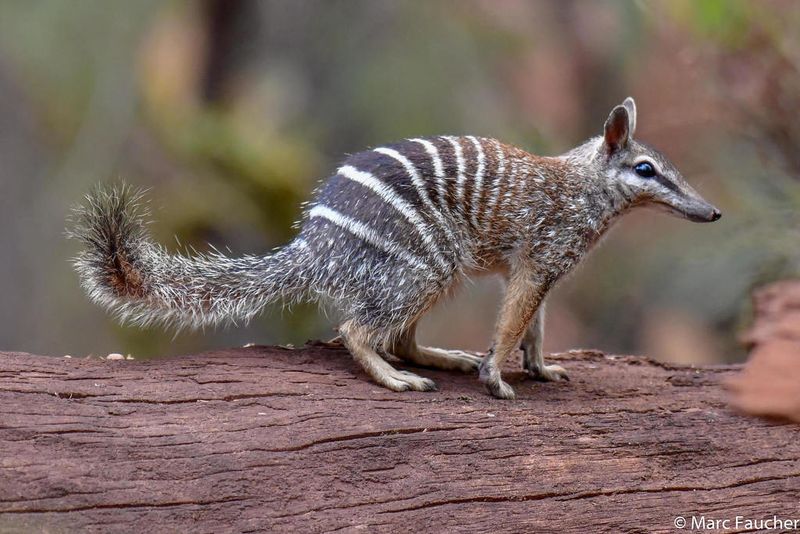
The Numbat, a tiny termite-eater, patrols the sunlit woodlands of Western Australia. With a coat patterned in stripes, it’s both striking and stealthy. Picture this small mammal, nose twitching, as it scours the ground for its favorite meal.
The eucalyptus-scented air buzzes with life as the Numbat nimbly navigates its world. Despite its size, the Numbat plays a crucial ecological role. Once widespread, it’s now a symbol of conservation efforts.
Fun fact: A single Numbat can eat up to 20,000 termites in a day!
Dugong

Beneath the warm waves of the Indian Ocean, the Dugong glides serenely in search of seagrass. Often mistaken for a mermaid, this gentle marine mammal has a distinctively rounded snout and paddle-like flippers.
Its movements are slow, almost balletic, as it feeds in the tranquil underwater world. The soft light plays across its skin, creating a shimmering dance of shadows. Dugongs are essential to their habitat, maintaining healthy seagrass beds.
Did you know? These gentle giants have inspired legends of mermaids across cultures.
Aardvark
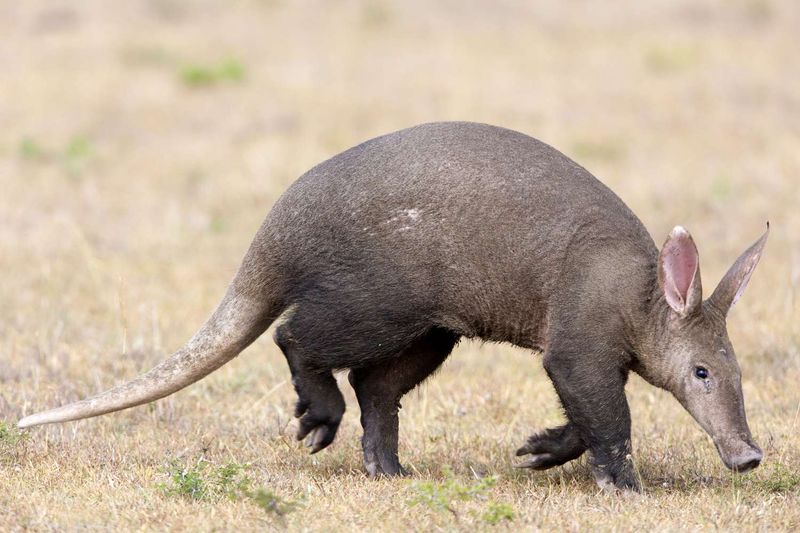
Under the African night sky, the Aardvark emerges to dig for ants and termites. Its robust claws and elongated snout are perfect tools for this nocturnal forager. Imagine the earthy scent of freshly turned soil and the sound of soft snuffling as it works.
The Aardvark’s tough skin protects it from insect bites, a testament to its adaptability. As a keystone species, it influences the ecosystem significantly.
Did you know? Aardvarks are vital to their environment, contributing to soil aeration and controlling insect populations.
Pangolin
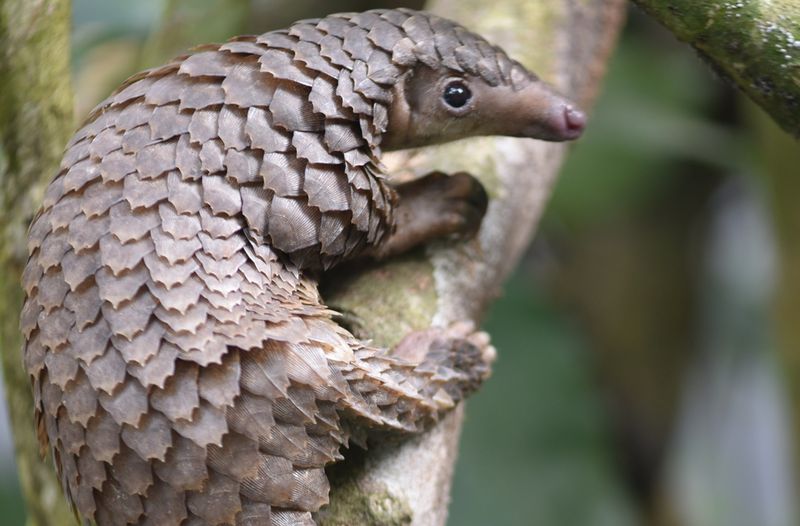
Wrapped in a unique armor of scales, the Pangolin is a true wonder of nature. This nocturnal creature, often seen curled into a ball, is a master of defense against predators.
The Asian jungles echo with the rustle of leaves as the Pangolin searches for ants with its sticky tongue. Its scaly exterior reflects the dappled sunlight, a mesmerizing sight. Despite its prehistoric appearance, the Pangolin faces modern threats.
Did you know? It’s one of the most trafficked mammals, highlighting the urgent need for its protection.
Tarsier

In the moonlit rainforest of the Philippines, the Tarsier’s eyes shine like jewels. Perched quietly, this pint-sized primate listens intently to the forest’s symphony. With fingers as delicate as its demeanor, the Tarsier leaps from branch to branch, a silent acrobat.
Imagine the cool, humid air filled with the scent of damp earth and the distant call of nocturnal creatures. Though small, the Tarsier’s presence is powerful, a symbol of the Philippines’ rich biodiversity.
Fun fact: Their eyes are so large they cannot move in their sockets!
Colugo
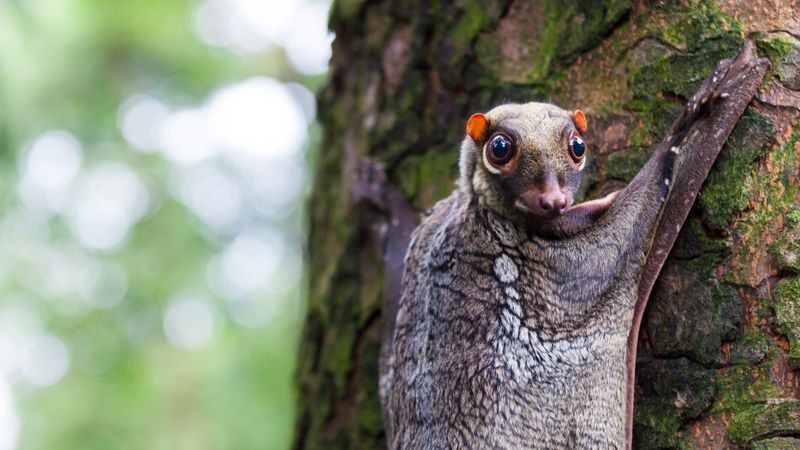
The Colugo, sometimes called the ‘flying lemur,’ is neither a lemur nor does it fly. This gliding mammal can drift from tree to tree in Southeast Asia’s forests, thanks to its extensive patagium.
Picture dusk settling in, as this creature launches itself into the air, a silhouette against the fading light. Its silent glide is a testament to nature’s ingenuity. With large, soulful eyes, the Colugo navigates the dense foliage with ease.
Did you know? Colugos are among the best gliders in the animal kingdom, capable of covering over 100 meters in a single leap!
Solendon

Amidst the shadows of the Cuban rainforest, the Solenodon moves with an ancient grace. Its elongated snout probes the leaf litter, searching for insects and grubs. This nocturnal mammal is a living fossil, a relic of a bygone era.
The forest hums with life as the Solenodon navigates its complex world. Its venomous bite, rare among mammals, makes it a unique survivor.
Did you know? The Solenodon’s evolutionary roots trace back to the age of dinosaurs, making it a fascinating subject for scientists.
Maned Wolf

The Maned Wolf, with legs that seem to stretch to the sky, roams the grasslands of South America. Its fiery red coat catches the sun, a brilliant flash amidst the green. This solitary hunter is known for its distinctive ‘bark’ – a call that echoes across the plains.
Imagine the scent of wild grasses and the whispering wind as the Maned Wolf patrols its territory. Though it resembles a fox, it’s neither wolf nor fox, but a unique species.
Did you know? Maned Wolves communicate using a mix of vocalizations and scent markings.
Tree Kangaroo

High in the trees of New Guinea’s rainforests, the Tree Kangaroo makes its home. With plush fur and a gentle gaze, it’s a master of arboreal life. Picture this marsupial bounding gracefully between branches, an acrobat of the treetops.
The air is rich with the scent of leaves and rain as the Tree Kangaroo forages. Despite its size, it moves with surprising agility.
Did you know? Unlike its ground-dwelling relatives, the Tree Kangaroo has adapted to a life in the canopy, a marvel of evolution.
Binturong

In the tangled jungles of Southeast Asia, the Binturong, or bearcat, lounges lazily on a branch. Its long, prehensile tail is as expressive as its whiskered face. Picture the sweet scent of popcorn wafting through the air, a curious trait of this nocturnal creature.
The Binturong’s thick fur and sharp claws aid it in navigating the dense forest. Though solitary, it plays a key role in its ecosystem, spreading seeds as it feasts on fruits.
Did you know? Despite its name, the Binturong is neither a bear nor a cat!
Fossa
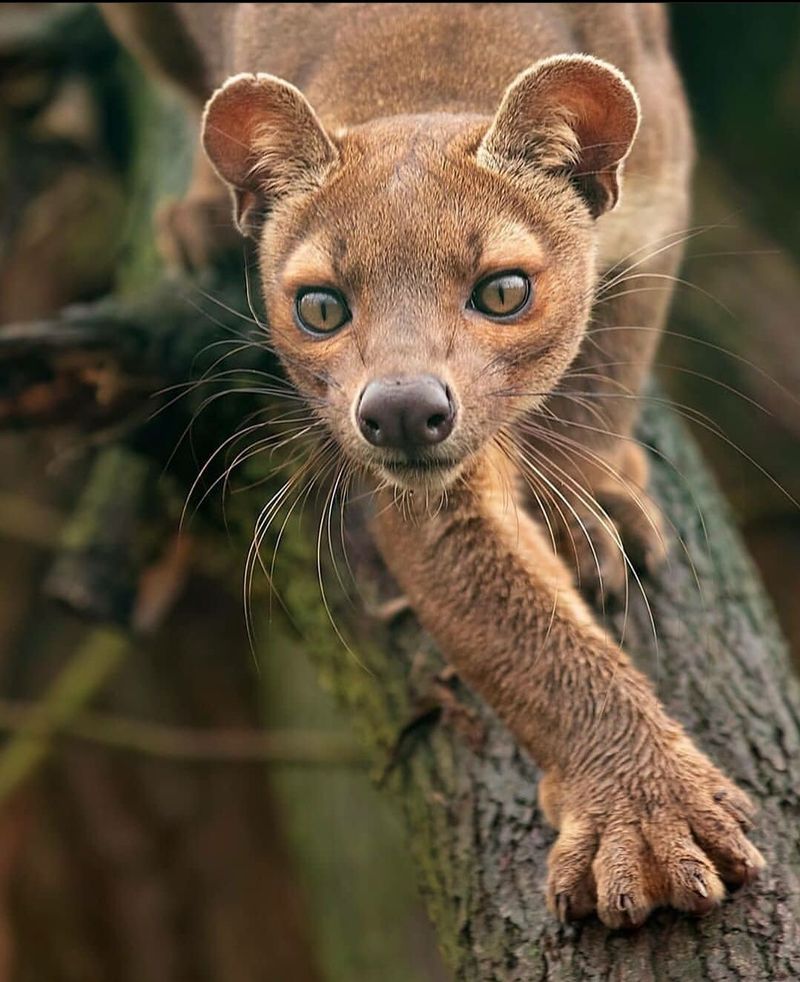
The Fossa is Madagascar’s top predator, sleek and agile. With a body built for climbing, it navigates the forest with the ease of a gymnast. Picture the sun-dappled undergrowth, alive with the sounds of the forest, as this carnivore prowls silently.
Its sharp eyes and ears are forever alert, attuned to every whisper of prey. Despite its cat-like appearance, the Fossa is related to the mongoose.
Did you know? The Fossa’s reputation as a fearsome hunter is matched by its elusive nature, rarely seen in the wild.

